Mis Cooking

What are the most common mistakes when cooking lobster at home ?
Cooking lobster at home can be delightful but common mistakes can affect taste and texture. Here are the most frequent errors: 1. **Not Preparing the Lobster Properly** - Underestimating the amount of salt needed for cooking water. - Ignoring the rinse before cooking to remove sand or grit. 2. **Overcooking the Lobster** - Cooking too long results in tough and chewy lobster. - Lack of temperature control during cooking. 3. **Choosing the Wrong Lobster** - Selecting poor quality or lethargic lobsters. - Neglecting size variation leading to uneven cooking times. 4. **Disregarding Safety Precautions** - Handling live lobsters incorrectly, risking injury. - Ignoring cross-contamination with other foods. 5. **Inadequate Flavoring** - Skipping seasoning, missing out on enhancing natural sweetness. - Overlooking garnishes that can improve the dining experience. 6. **Improper Storage and Handling** - Storing improperly if not cooked immediately. - Delaying cooking after purchase, risking the quality of the lobster. By avoiding these mistakes, you can ensure that your homemade lobster dishes are delicious and succulent.

What are some ways to organize my kitchen to make cooking more efficient ?
Organizing your kitchen can greatly enhance the cooking experience by making it more efficient and enjoyable. Here are some strategies to consider: 1. Zone Cooking Areas 2. Declutter Regularly 3. Smart Storage Solutions 4. Group Like Items Together 5. Maximize Fridge and Freezer Space 6. Keep a Clean Sink 7. Lighting and Safety
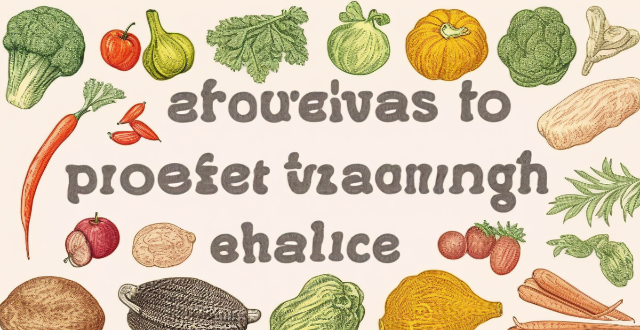
How can I streamline my cooking process to save time in the kitchen ?
The text provides tips and tricks for streamlining the cooking process, including planning ahead, using slow cookers or pressure cookers, prepping ingredients in advance, cooking once and eating multiple times, and cleaning as you go. These strategies aim to save time, reduce stress, promote healthy eating, and create a more enjoyable cooking experience by emphasizing preparation and organization.

Can you explain the different types of cooking pans and their uses ?
The text provides a detailed overview of different types of cooking pans, highlighting their specific uses and features. It covers non-stick pans, cast iron pans, stainless steel pans, copper pans, aluminum pans, grill pans, skillets, saucepans, and griddle pans. Each type of pan is described in terms of its ideal uses and unique characteristics, such as heat conductivity, maintenance requirements, and compatibility with various cooking methods and materials. The summary emphasizes the importance of using the right pan for a given task to achieve optimal cooking results.

What are some creative ways to use tofu in vegetarian cooking ?
Tofu is a versatile and nutritious ingredient that can be used in a variety of vegetarian dishes. Here are some creative ways to use tofu in your cooking: marinated and grilled tofu skewers, creamy tofu pasta sauce, tofu stir-fry, tofu bao buns, tofu scramble, and tofu dumplings. By incorporating these ideas into your vegetarian cooking, you can enjoy the many health benefits of tofu while exploring new flavors and textures in your meals.

What are the basic techniques used in Chinese cooking ?
Chinese cuisine is known for its diverse flavors and cooking techniques. Here are some of the basic techniques used in Chinese cooking: 1. Stir-frying involves quickly frying small pieces of food in a wok or frying pan over high heat. The key to successful stir-frying is to use hot oil, fresh ingredients, and constant motion to prevent burning. 2. Steaming involves placing food in a steamer basket over boiling water and allowing it to cook through steam. This method is often used for dumplings, buns, fish, and vegetables. 3. Braising is a slow-cooking method that involves simmering meat or vegetables in liquid until they become tender and flavorful. This technique is often used for stews, soups, and braises. 4. Deep-frying involves submerging food in hot oil until it becomes crispy and golden brown. This technique is often used for fried rice, spring rolls, and tempura dishes. 5. Roasting involves cooking food in an oven at high temperatures until it becomes caramelized and tender. This technique is often used for roasted meats, vegetables, and baked goods like mooncakes and egg tarts.
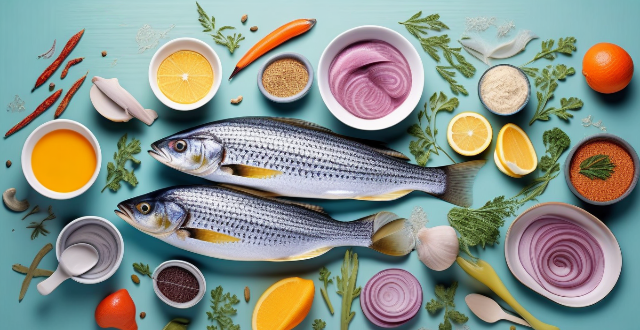
What are the best techniques for cooking seafood ?
The article provides a summary of the best techniques for cooking seafood, which include poaching, grilling, steaming, and baking. Poaching is a gentle method of cooking seafood in a flavorful liquid such as water, broth or wine. Grilling is ideal for firm-fleshed fish like salmon or swordfish and adds flavor and texture to seafood. Steaming is a healthy way to cook seafood without adding extra fat and works well for fish fillets or shellfish like clams or mussels. Baking is a dry heat method that works well for thicker cuts of fish like cod or haddock. The article emphasizes the importance of paying attention to timing and temperature to avoid overcooking seafood.
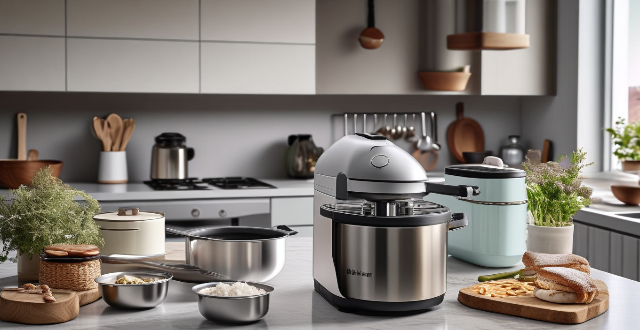
How can I use kitchen appliances to save time while cooking ?
Using kitchen appliances like food processors, slow cookUsing kitchen appliances like food processors, slow cookers, rice cookers, slow cookers, electric pressure cookers, rice cookers, and stand mixers can significantly save time in meal preparation. These appliances offer features such as chopping, grinding, making dough, cooking at different heat settings, and precise mixing, allowing for efficient and convenient cooking experiences.

How does proper cooking and baking contribute to food safety ?
Food safety is crucial for maintaining public health and preventing illnesses. Proper cooking and baking are vital components of food safety, as they can destroy harmful microorganisms that may contaminate raw ingredients. High temperatures during cooking and baking kill most bacteria, reduce viruses, and eliminate parasites. Additionally, proper cooking practices prevent cross-contamination by using separate utensils and cutting boards for different types of food. To ensure food safety during cooking and baking, it's essential to use a food thermometer to check the internal temperature of cooked foods, follow recipes and time guides, keep work surfaces and equipment clean, store raw and cooked foods separately, avoid overcrowding pans, and refrigerate leftovers promptly. By adopting these best practices, you can significantly minimize the risk of foodborne illnesses and enjoy safe, delicious meals.

How can I reduce the amount of cleaning required after cooking a meal ?
Cleaning up after cooking can often feel like a chore, especially after spending time preparing a delicious meal. However, there are several strategies you can implement to minimize the mess and make cleaning up quicker and easier. Here's a detailed guide on how to reduce the amount of cleaning required after cooking: Before You Start Cooking - Plan Ahead: Decide what you will cook and read through the recipe completely. This helps you prepare all necessary ingredients and tools beforehand, reducing the need to clean up multiple times during cooking. Prep Your Workspace: Clear your countertops and clean them thoroughly before you start cooking. A clean work area means less mess to clean up later. Use Non-stick Cookware: Non-stick pans and bakeware require less oil or butter, making them easier to clean with just a quick wipe down. Set Up a Spill Station: Place a sheet of foil under or beside the stove to catch drips and spills, which can be easily thrown away after cooking. While You Are Cooking - Clean as You Go: Wash utensils and dishes immediately after using them. This prevents food residue from drying up and becoming harder to clean. Use Covers on Pots and Pans: This reduces splatters and saves you from having to wipe down the stove and surrounding surfaces. Contain Small Messes: Use a small bowl to hold waste like vegetable peels or fish bones rather than letting them spread over the counter. After You Have Cooked - Soak Dishes: If you have dishes that are difficult to clean, fill them with hot water and a little detergent to soak while you eat. This makes them much easier to clean later. Wipe Down Appliances: Give your appliances like blenders, mixers, or food processors a quick wipe down after use to remove any splatters. Clean the Stove Top and Countertops: Wipe these areas down with a damp cloth after cooking to avoid crusty buildup. General Tips for Efficiency - Simplify Your Recipes: Opting for simpler recipes can reduce the number of dishes used and ingredients prepared. Cook One-Pot Meals: One-pot meals like stews, casseroles, or stir-fries require fewer dishes to wash. Use Disposable Items Wisely: While not environmentally friendly, disposable items like baking paper, foil, or paper plates can be used strategically in situations where cleanup is particularly challenging.

How do I choose the right type of rice for Chinese cooking ?
When it comes to Chinese cooking, selecting the rightWhen it comes to Chinese cooking, selecting the right for achieving the desired texture and selecting the right type of rice is crucial for achieving the desired texture and flavor in your dishes. Consider the dish you are making, look for quality and freshness when purchasing rice, and don't forget to consider your personal preferences. By following these steps, you can choose the perfect type of rice for your Chinese cooking needs.
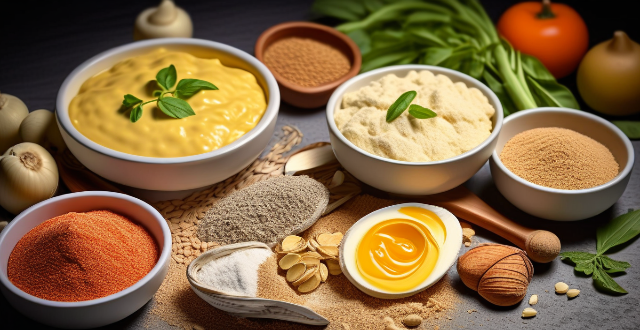
What are the key ingredients in Indian cooking ?
Indian cuisine is known for its rich flavors and diverse dishes. The key ingredients that make Indian cooking unique are spices, herbs, ghee, lentils, rice, yogurt, nuts and seeds, and bread. These ingredients add flavor, color, and aroma to the dishes and create authentic and delicious Indian cuisine.

Can you explain the concept of umami in Japanese cooking ?
Umami is one of the five basic tastes, along with sweet, sour, salty, and bitter. It is often described as a savory or meaty taste, and is commonly found in foods such as mushrooms, soy sauce, and aged cheeses. In Japanese cooking, umami is considered an essential flavor profile that adds depth and complexity to dishes. The science of umami is caused by the presence of glutamate, a type of amino acid, in food. When we eat foods that contain glutamate, it stimulates our taste buds and sends signals to our brain that register as a distinct taste. This taste is often associated with protein-rich foods like meat, fish, and vegetables. In Japanese cuisine, umami is used to enhance the flavors of dishes and create a more complex taste profile. Some common ingredients that are high in umami include miso (fermented soybean paste), dashi (Japanese broth made from dried fish and seaweed), soy sauce, dried shiitake mushrooms, and kombu (a type of seaweed). Umami is used in a variety of ways in Japanese cooking. For example, miso soup is made by mixing miso paste with dashi broth to create a savory soup that is often served as part of a traditional Japanese breakfast. Sushi combines vinegared rice, fresh fish, and soy sauce to create a perfect balance of flavors that includes umami. Ramen noodles use a broth made with chicken or pork bones, which are rich in umami. Teppanyaki involves grilling meat and vegetables on a hot plate, which helps to release their natural umami flavors. In conclusion, umami is an important flavor profile in Japanese cooking that adds depth and complexity to dishes. By using ingredients that are high in glutamate, chefs can create dishes that are both delicious and satisfying.
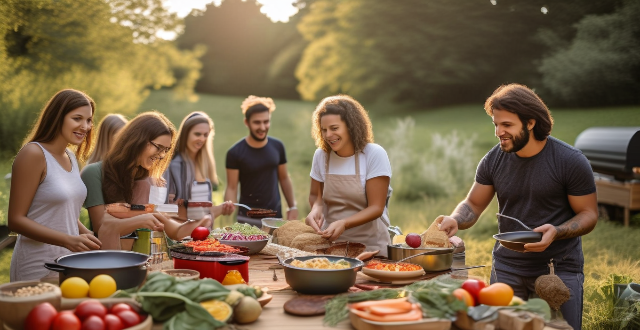
What are the benefits of taking a cooking class while on vacation ?
Taking a cooking class while on vacation offers numerous benefits, including improved culinary skills, cultural immersion, social experiences, personal growth, and health benefits. Learn new techniques and local cuisine, understand traditions, practice language skills, meet new people, build confidence, enhance creativity, incorporate healthy habits, and relieve stress.
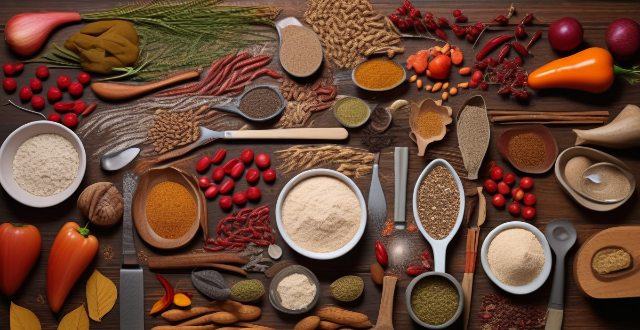
What is the significance of spices in Indian cooking ?
The significance of spices in Indian cooking is multifaceted, encompassing flavor enhancement, cultural traditions, and medicinal benefits. Key spices like turmeric, cumin, coriander, mustard seeds, fenugreek, red chili powder, garam masala, curry leaves, asafoetida, and tamarind contribute to the complex flavor profiles characteristic of Indian cuisine. These spices are used through techniques such as tempering, grinding, and roasting to create a balance of tastes and visual appeal. Historically, spices were valuable commodities in trade and are integral to traditional medicine and religious practices. Regional variations in spice use reflect India's diverse geography and cultural heritage. Understanding the nuances of spice usage allows for a deeper appreciation of the artistry behind Indian dishes.
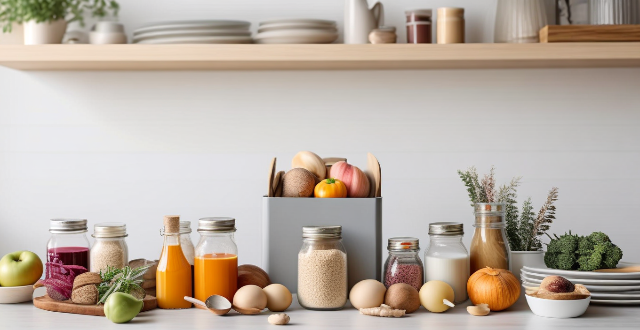
How can I simplify my grocery shopping process to save time in the kitchen ?
Simplifying the grocery shopping process can save time in the kitchen. Planning ahead, creating a meal plan and categorized shopping list, using technology, choosing efficient shopping strategies, and streamlining meal preparation with batch cooking and simple recipes can all contribute to a more efficient and enjoyable cooking experience.

How can I tell if my shrimp is cooked properly ?
Cooking shrimp perfectly requires attention to color, texture, curvature, and flavor. Look for an opaque white color, firm but not hard texture, slight "C" shape curvature, and a clean, sweet flavor without fishiness. Use a thermometer, watch the timing closely, choose the right cooking method, and practice regularly to achieve culinary perfection with your shrimp dishes.

How can I incorporate more whole foods into my home cooking ?
The provided text offers a comprehensive guide on how to incorporate more whole foods into one's home cooking routine. Here is a summary of the key points: 1. **Plan Your Meals Around Whole Foods:** Engage in weekly menu planning, focusing on meals that include whole food ingredients, and make a shopping list based on this plan to avoid processed items. 2. **Start with Whole Grains:** Swap refined grains like white rice and pasta with whole grain versions such as brown rice and whole wheat pasta. Experiment with different whole grains like quinoa and barley for added variety. 3. **Include More Fruits and Vegetables:** Aim for a diverse range of fruits and vegetables to get a wide spectrum of nutrients. Prep them at the start of the week for easy access. 4. **Choose Lean Proteins:** Opt for skinless poultry and fish over red meats. Incorporate plant-based proteins like legumes, nuts, and seeds. 5. **Use Healthy Fats:** Cook with olive oil or avocado oil instead of butter or margarine. Add nuts and seeds to dishes for a healthy fat boost. 6. **Limit Processed Foods:** Be mindful of food labels and avoid products with numerous unrecognizable ingredients. Make your own snacks using whole food ingredients. 7. **Get Creative with Spices and Herbs:** Use these natural flavor enhancers instead of salt or high-sodium seasonings. Consider growing your own herbs for fresh flavors year-round. 8. **Cook from Scratch When You Can:** Make homemade stocks, sauces, and dressings instead of buying pre-made versions. Batch cook whole food meals and freeze leftovers for quick meals later. 9. **Embrace Fermented Foods:** Include probiotic-rich foods like kimchi and sauerkraut for gut health benefits. 10. **Keep Learning and Adapting:** Continuously educate yourself about whole foods and their nutritional benefits. Stay open to trying new whole foods to keep meals exciting and varied. By following these steps, individuals can successfully integrate more whole foods into their home cooking, leading to a healthier lifestyle for themselves and their families.
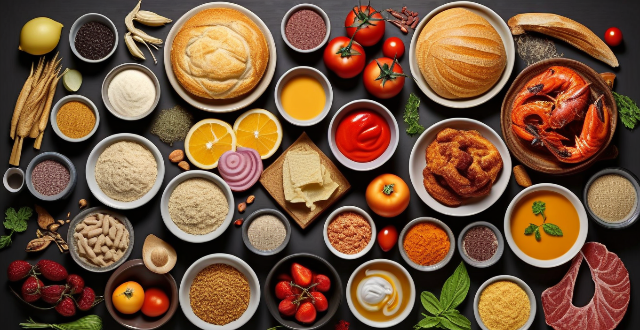
How does Chinese cuisine differ from other Asian cuisines ?
Chinese cuisine is one of the most diverse and influential cuisines in the world, with a history that spans thousands of years. While there are many similarities between Chinese cuisine and other Asian cuisines, there are also several key differences that set it apart. These differences include the use of ingredients, cooking techniques, flavor profiles, and regional variations within each cuisine. Chinese cuisine often uses a wider variety of ingredients than other Asian cuisines, including both meat and vegetables. Additionally, Chinese cuisine often incorporates more spices and herbs into its dishes than other Asian cuisines. Another difference is the cooking techniques used. Chinese cuisine often involves stir-frying or steaming foods, while other Asian cuisines may rely more heavily on grilling or baking. Chinese cuisine also tends to use woks for cooking, which allows for high heat and quick cooking times. In terms of flavor profiles, Chinese cuisine has a distinct flavor profile that sets it apart from other Asian cuisines. Chinese cuisine often features bold flavors such as garlic, ginger, soy sauce, and chili peppers. In contrast, Japanese cuisine may have a lighter, more delicate flavor profile that emphasizes umami (savory) flavors. Thai cuisine, on the other hand, may be spicier and more aromatic than Chinese cuisine. Finally, another difference between Chinese cuisine and other Asian cuisines is the regional variations within each cuisine. China has a vast geographic area with many different regions, each with its own unique culinary traditions. Similarly, Japanese cuisine can vary greatly depending on whether it comes from the northern or southern regions of Japan.
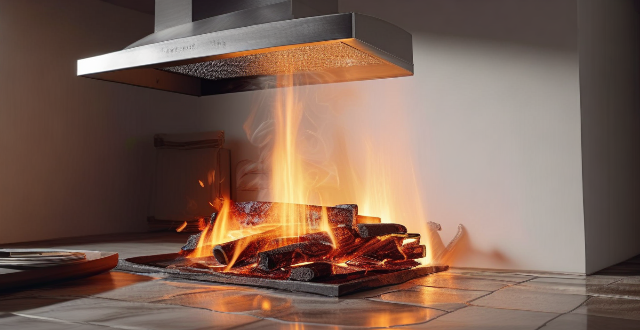
What safety precautions should be followed in kitchens to avoid fires ?
To prevent kitchen fires, essential safety measures include keeping flammable materials away from heat sources, cleaning up spills immediately, not leaving cooking unattended, installing working smoke alarms, and having a fire extinguisher accessible. Cooking safety tips involve using appropriate cookware, watching pot lids, avoiding overfilling pots with oil, and setting timers for cooking. Electrical appliance safety requires unplugging unused appliances, inspecting cords regularly, and avoiding damaged plugs or outlets. Gas stove safety includes checking for gas leaks, keeping flammable objects away from burners, and having gas lines professionally inspected annually. Maintenance and cleanliness are also crucial, such as cleaning range hood filters, ovens, and disposing of grease properly.
![Are there any cooking classes or food tours available in [insert city/country] ?](/images/2kge/83d95596-30d0-46c5-a688-6d2a9fa66a7e.png)
Are there any cooking classes or food tours available in [insert city/country] ?
In [insert city/country], cooking classes and food tours are available, offering a variety of experiences. Cooking classes range from traditional dishes to street food snacks, with durations from 2 to 4 hours and prices between $30 and $75 per person. Food tours include culinary journeys, tasting adventures, and walking tours, lasting from 4 to 8 hours and costing between $80 and $150 per person. Contact organizers for booking and reservation details.
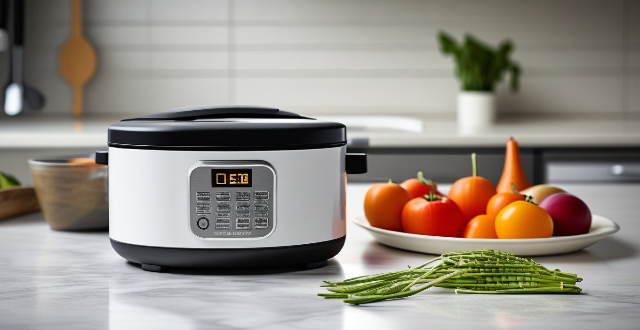
What are some must-have kitchen gadgets for healthy eating ?
In pursuit of healthy eating, having the right kitchen gadgets can significantly improve the preparation and enjoyment of nutritious meals. This article lists essential tools such as a high-quality chef's knife for efficient chopping, a food processor for versatile cooking tasks, a steamer basket for nutrient-rich cooking, and other devices like slow cookers, spiralizers, and immersion blenders that facilitate healthy meal preparation. Each device is discussed in terms of its benefits, uses, and why it is considered essential for healthy cooking. By incorporating these tools into your kitchen setup, you can make preparing healthy meals easier and more enjoyable, setting the foundation for a lifetime of healthy eating habits.
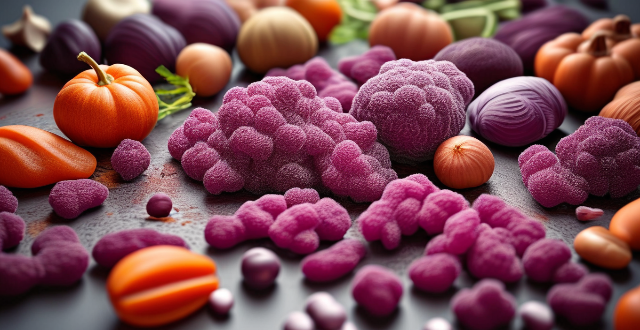
Is there a risk of food poisoning from eating raw or undercooked foods ?
There is a risk of food poisoning from eating raw or undercooked foods due to the presence of harmful bacteria, viruses, or parasites. To minimize this risk, it is essential to follow proper food handling and cooking practices, such as washing hands thoroughly, keeping raw and cooked foods separate, cooking foods to the appropriate temperature, and avoiding eating raw or undercooked meat, poultry, seafood, and eggs. By taking these precautions, you can help protect yourself and others from the adverse effects of food poisoning.

How can I incorporate seasonal ingredients into my holiday cooking ?
Incorporating seasonal ingredients into your holiday cooking is not only a way to serve the freshest and most flavorful dishes but also supports local farmers and reduces the carbon footprint of your meal. Here are some tips on how to make the most of what's in season: 1. Know Your Seasonal Produce: Research local seasonality and consult seasonal produce guides to find out what fruits and vegetables are in season in your area. 2. Plan Your Menu Around Seasonal Ingredients: Choose one or two seasonal items as the stars of your dish, and build flavor profiles around them. 3. Visit Farmers Markets and CSAs: Support local farmers by shopping at farmers markets or joining a Community Supported Agriculture (CSA) program. Get inspired by the variety of seasonal produce available there. 4. Experiment with New Recipes: Try global cuisines that traditionally use seasonal ingredients, or adapt family favorites by swapping out non-seasonal ingredients for what's currently fresh. 5. Use Seasonal Ingredients Creatively: Swap out sides for in-season vegetables like parsnips, turnips, or sweet potatoes, and garnish with thinly sliced radishes, cucumbers, or even edible flowers for an extra pop of color and freshness. 6. Don't Forget About Meat and Dairy: Choose seasonal proteins like game meats in the fall and winter, and consider seafood that is in season for coastal holiday celebrations. Opt for local dairy products like cheeses which can have seasonal variations in taste and quality. 7. Preserve the Bounty: If you come across a great deal on seasonal produce, consider preserving it through canning, pickling, or freezing to enjoy later in the year.
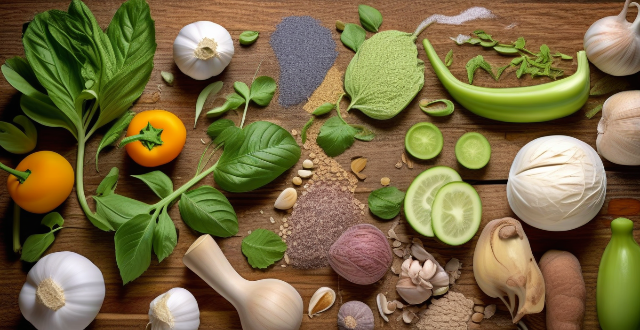
What ingredients are commonly used in Mexican cooking to create its unique flavor profile ?
The article provides an overview of the key ingredients used in Mexican cooking, including chili peppers like ancho, jalapeño, serrano, and habanero; herbs and spices such as cumin, coriander, oregano, and cilantro; and other ingredients like tomatoes, onions, garlic, lime juice, epazote, and hominy. It explains how these ingredients contribute to the distinctive flavor profile of Mexican cuisine and encourages readers to experiment with creating authentic Mexican meals at home.

Can children get vaccinated against COVID-19 ?
Children are eligible for COVID-19 vaccination based on their age and health status. The Pfizer-BioNTech vaccine is authorized for children aged 5-11, while both the Pfizer-BioNTech and Moderna vaccines are authorized for those aged 12-17. Children with no history of severe allergic reactions or other health conditions that may increase the risk of adverse reactions to the vaccine are generally considered suitable candidates. Vaccinating children can help protect them from contracting the virus and developing symptoms, reduce the risk of severe illness and complications, and contribute to achieving herd immunity. While there are potential risks and side effects associated with vaccination, they are generally outweighed by the benefits. Parents should consult with their child's healthcare provider to determine if vaccination is appropriate for their child.

What are the advantages of using a slow cooker in the kitchen ?
The text discusses the advantages of using a slow cooker in the kitchen, which include convenience, energy efficiency, flavor intensification, healthier cooking methods, versatility, cost-effectiveness, and safety. Slow cookers offer a "set it and forget it" approach, use less electricity than conventional ovens or stovetops, allow flavors to meld together more thoroughly, require minimal fat use, are versatile for one-pot meals, can use economical cuts of meat, have cool touch surfaces for safety, and do not involve open flames. Incorporating a slow cooker into your culinary toolkit can lead to delicious, hassle-free meals.

How long should I steam mussels until they're fully cooked ?
Mussels are a healthy seafood option that can be easily prepared at home through steaming. Fully cooked mussels are crucial to avoid harmful bacteria and parasites, while maintaining their delicate flavor and texture. The cooking time of mussels is influenced by factors such as size, quantity, starting temperature, and altitude. General guidelines suggest steaming small to medium mussels for 3-5 minutes and large mussels for 5-7 minutes. It's essential to check for doneness by looking for opened shells and discarding any unopened mussels. Steps for steaming mussels include cleaning, preparing the steamer, heating the pot, adding mussels, covering and steaming, and serving. Tips for perfectly steamed mussels include using a timer, being careful when opening the pot, adding flavorful ingredients, and always discarding any unopened mussels.